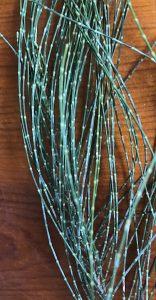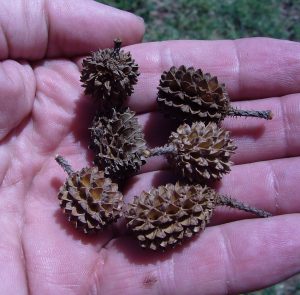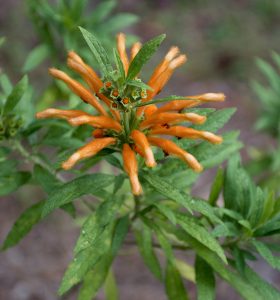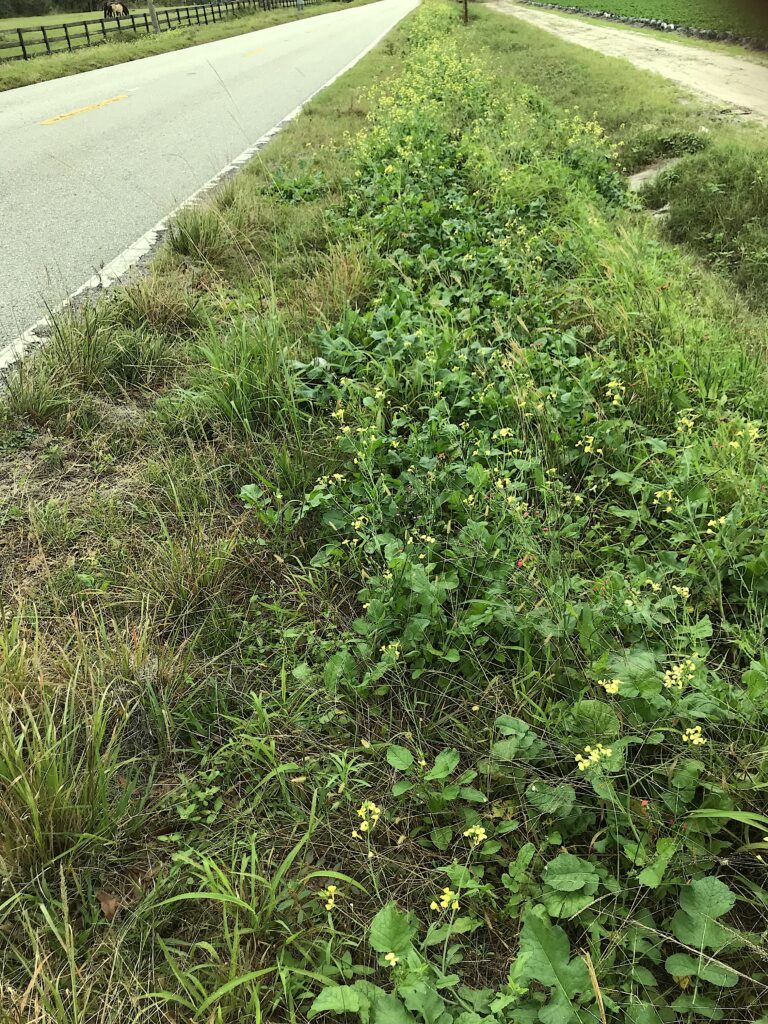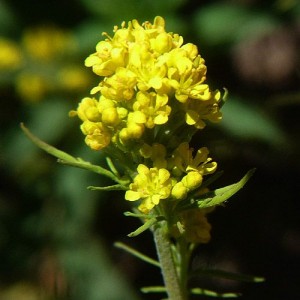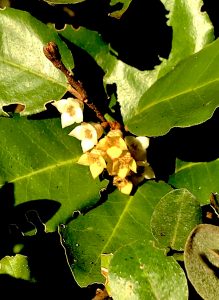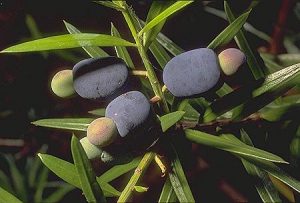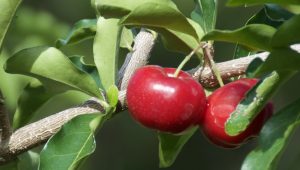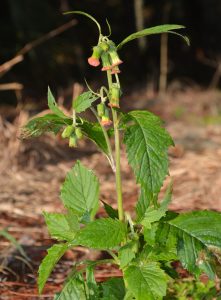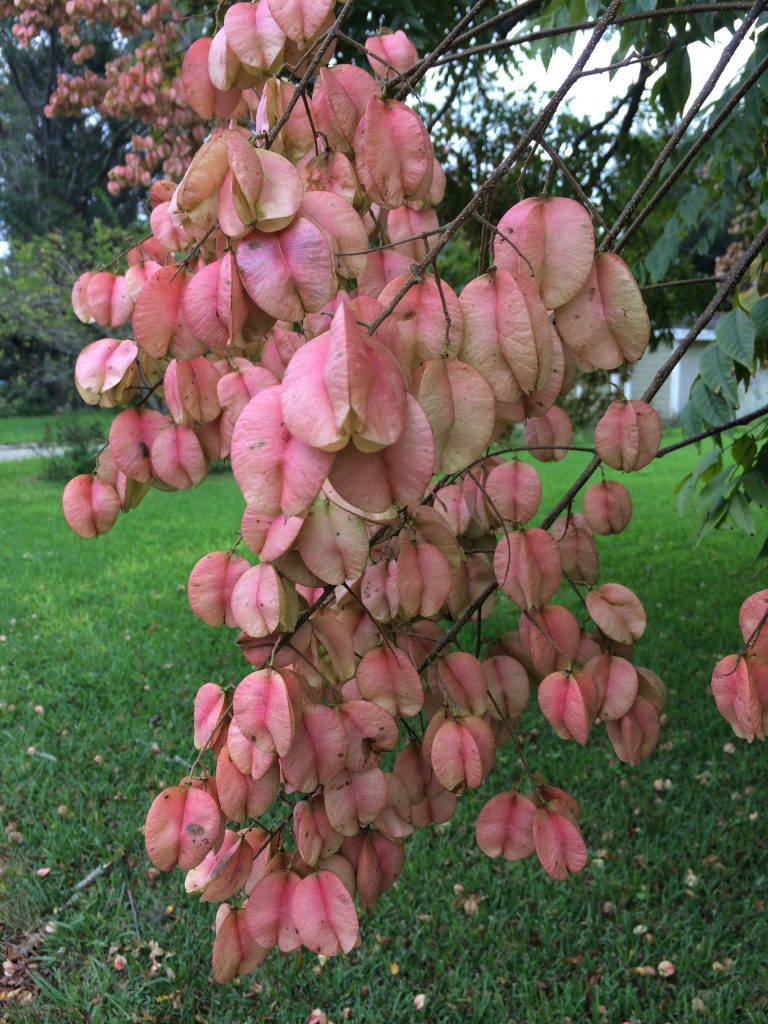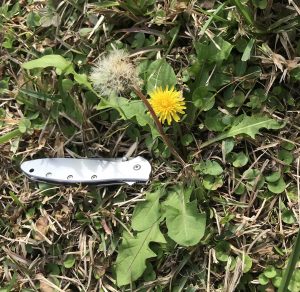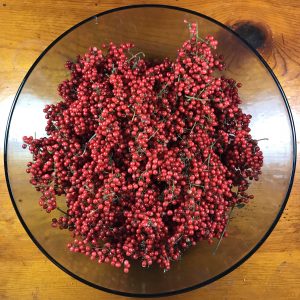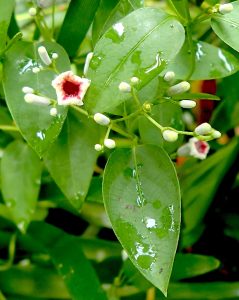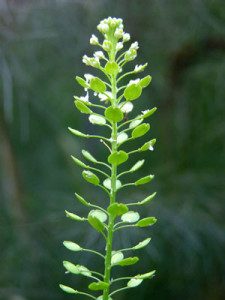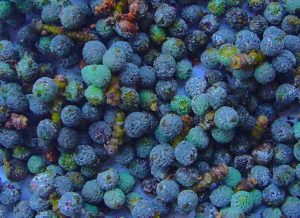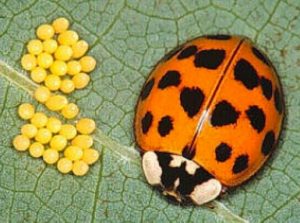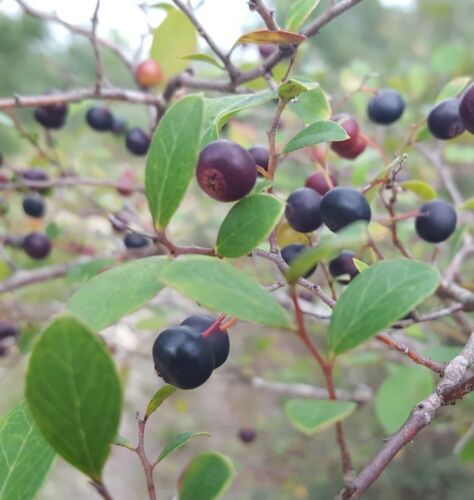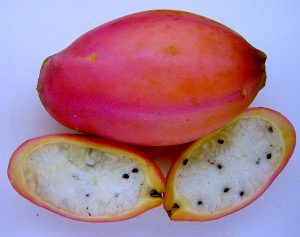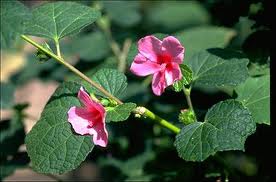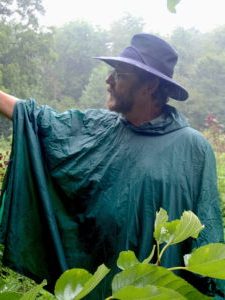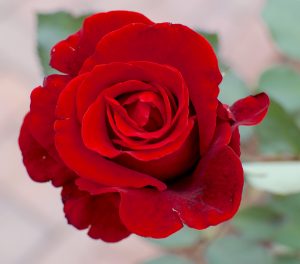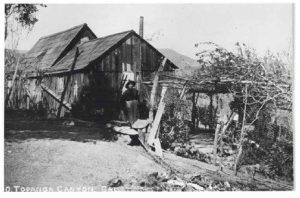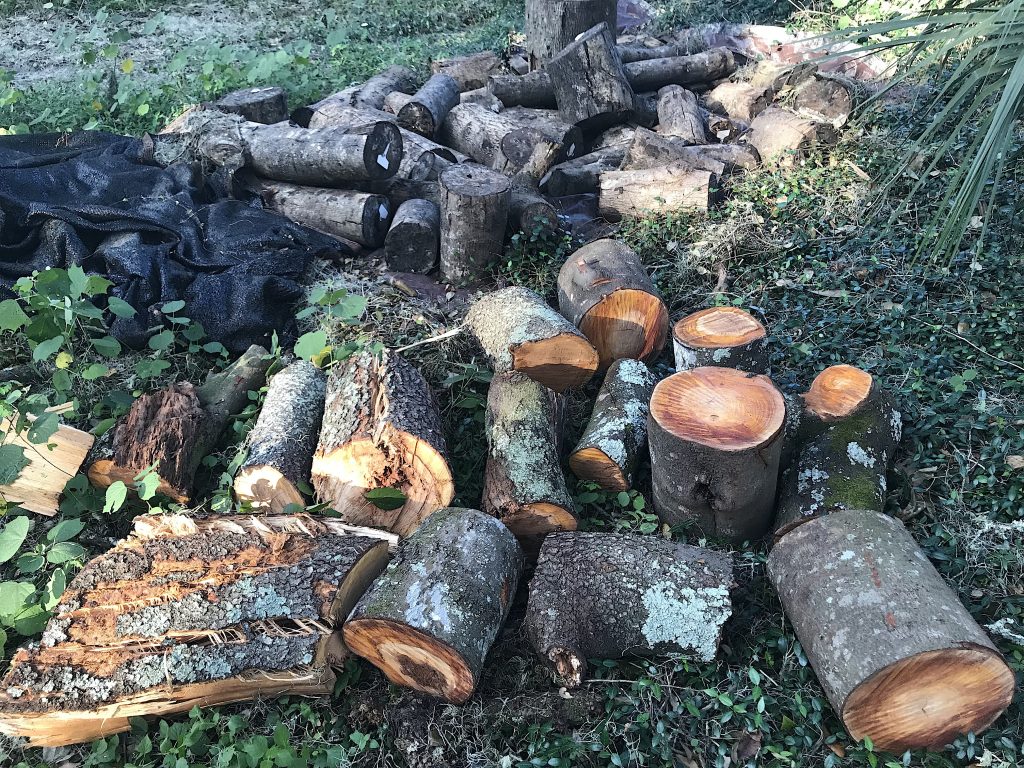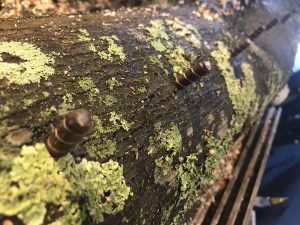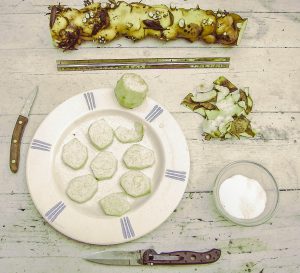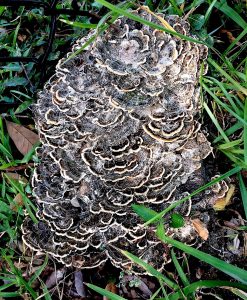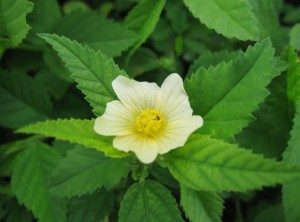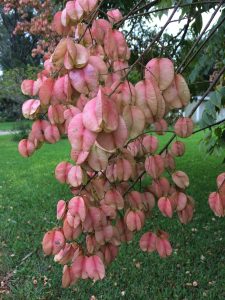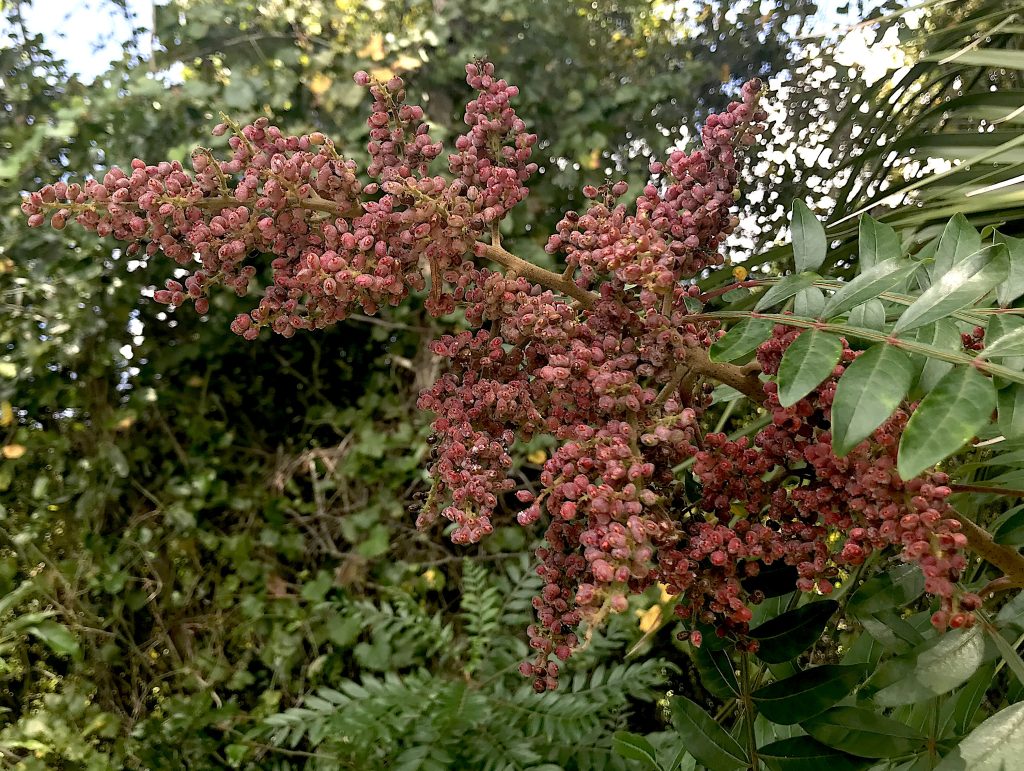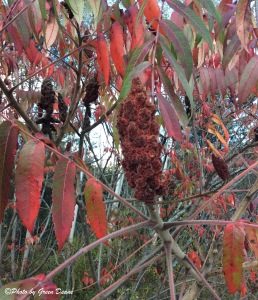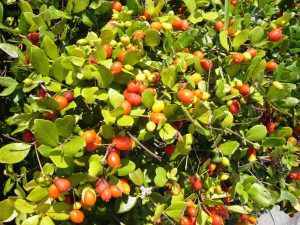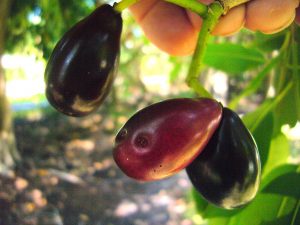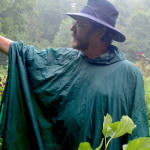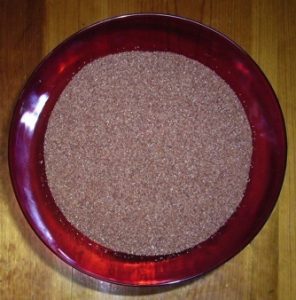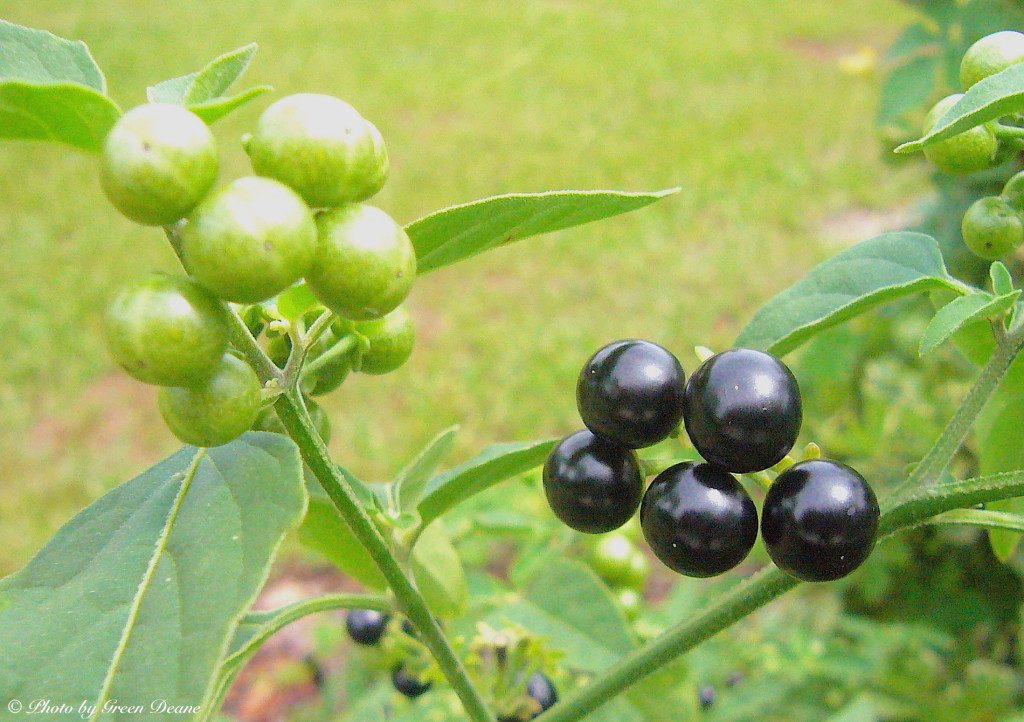
American Nightshade, the berries luster at the end of a peduncle. Photo by Green Deane
Edible or poisonous or both? The American Nightshade (Solanum americanum) remains controversial. Usually you find a plant here or there, but sometime you will find a large clump of them producing thousands of ripe berries which is why Euell gibbon wrote that he made pies out of them.
The plant perhaps represent how botanists can fail the science. Presumptions, poor description and ignorant naming put this species into a centruies-long fog of what is it and is it edible. Meanwhile foragers kept on consuming it, a classic example of how the academic tower can ignore the lower landscape.
Regardless of the name du jour, I have for years linked certain physical characteristics to a certain plant and have eaten the ripe berries without issue. For decades I ignored the plant then through a friend I met a Cuban refugee who ate them regularly. What is now called Solanum americanum is also referred to as the American Black nightshade complex.

Blossom petals can go backwards.
Here’s what I look for: shiny green berried (toxic), mottled and flecked with white dots. Usually they are all clustered at the end of a small stem called a peduncle, Occasionally one berry will not be in the cluster. Green Berries are toxic. They ripen into dark purple berries. The small white blossom, will occasionally have white petals that bend downward, most blossom will have petals that turn upward.
I personally have not eaten the cooked leaves but I have a friend who did. Without consultation he misidentified the American nightshade as an amaranth and steamed the leaves instead of boiling them. Everyone in the family who ate the steamed leaves got bad headaches but other wise were fine. One infers that boiling removes something we don’t want whereas steaming does not. In poorer countries the cooked leaves are eaten before the plant blossoms. If they are still bitter after boiling once, they are boiled a second time like poke weed.

Foraging classes are held rain or shine, heat or cold. Photo by Nermina Krenata
Foraging Classes: Should have good weather for this weekend’s classes though a bit o a drive for me:
Saturday January 28th, Mead Garden: 1500 S. Denning Dr., Winter Park, FL 32789. Meet at the bathrooms. 9 a.m.
Sunday January 29th, Dreher Park, 1200 Southern Blvd., West Palm Beach, 33405. 9 a.m. meet north of the science center parking lot.
Spruce Creek Park, 6250 Ridgewood Ave. Port Orange, 32127. Meet at the pavilion. 9 a.m.
Blanchard Park, 2451 N Dean Road, Orlando, FL 32817, meet at the picnic area by the tennis court 9 a.m.
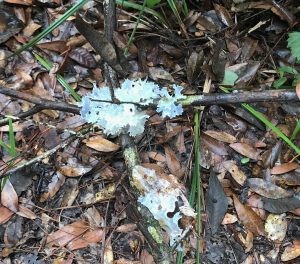
Jelly Fungus is usually found on above ground wood with the bark still attached. Photo by Green Deane
White jelly fungus (Tremella fuciformis) is easy to spot and is available all year. One usually finds it on the bark of dead hardwood, Those detail are important as there is (Ductifera pululahuana) somewhat of a look alike which as far as I know is not edible that grows on the ground on barkless decomposing wood. It is not poisonous but does not reach the quality of being eaten. Jelly fungus (Tremella fuciformis) does not have much flavor which is why it is often dried then rehydrated with a flavorful liquid of choice. Also if you put it in a meal with a lot of other white items it can disappear.
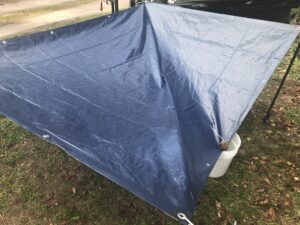
Using and 8-by-6 tarp to collect rain water. Photo by Green Deane
One thing I learned from past hurricanes is to have ample water stored for the days when the electricity disappears. When Francis blew through in 2004 I had a 25,000 gallon pool. When Irma came I had some 50 gallons set aside i na barrel. During Ian I was ready but only lost electricity thus water delivery for only eight hours. There is a stream half-a-mile down the house, and it rose 25 feet after Ian but using that would require carrying, sterilizing and filtering. So with a thin storm front approaching Wednesday evening I made my second water catchment system (an 8-foot by 6-foot tarp, four poles, plastic ties, a weight (rock)
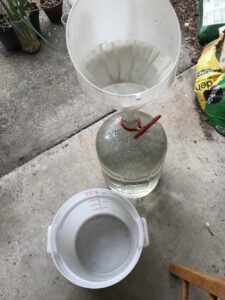
A little debris cam with the rain. Photo by Green Deane
and a bucket. In the morning the bucket was full of clear water, which I filtered through a large coffee filter into a 5-gallon wine carboy. Interestingly the rain water tasted like spring water. (The land I grew up on had five springs, two of which were turned into wells.) The rain water had tiny bits of leaves in it, I added a little bleach and I think I am good to go. As rain usually accompanies storms that blow down powerlines, this seem like a good temporary system for such occasions.
If you look across local lakes now you will see ruby red splotches on the horizon. Those are maples putting on new leaves. Are maple leaves edible? Yes and seeds, too. Are they prime foraging food? Opinions vary. The delicate samaras (seebelow right) happens to be red but they can also be green. Later the auto-rotating wings will turn brown. Locally the trees are so heavy with seeds they appear red from a distance. As for eating them what you need to do is taste them first. If they are not bitter you can tear off the wings and eat them raw though some folks eat the soft wings, too. If they are bitter they need to be cooked in boiling water, cooled, then tasted. They should be less bitter.
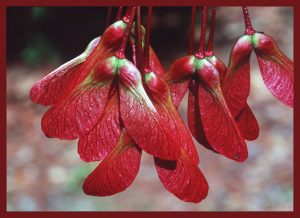 You may have to boil them again. Non-bitter seeds can also be roasted or sun-dried. Some Native Americans sprouted the seeds for a treat. I do not know of any toxic maple seeds to humans but red maple (Acer rubrum) leaves and seeds are toxic to horses. That said I do recall we had two red maple intentionally planted in the barnyard. My father liked the looks of them. Our horses — definitely leaf eaters — left them alone. To read more about maples go here.
You may have to boil them again. Non-bitter seeds can also be roasted or sun-dried. Some Native Americans sprouted the seeds for a treat. I do not know of any toxic maple seeds to humans but red maple (Acer rubrum) leaves and seeds are toxic to horses. That said I do recall we had two red maple intentionally planted in the barnyard. My father liked the looks of them. Our horses — definitely leaf eaters — left them alone. To read more about maples go here.
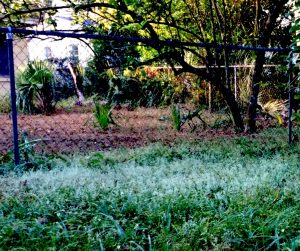
West Indian Chickweed can indeed look like snow.
Drymaria cordata… Drymary… West Indian Chickweed… White Snow. Hopefully you can see in the accompanying picture why this species is called White Snow. When it is seeding and the sun hits the seed heads just right it can resemble a patch of white snow on your lawn. Unlike true chickweed, which is Stellaria media, Drymary is here most of the year but has similar uses to true chickweed (which you can also find right now.) Young leaves and shoots are edible, older leaves have some medicinal uses including use as a diuretic. There is some research that suggests it can reduce coughing and can easy anxiety. You can read more about Drymary here.
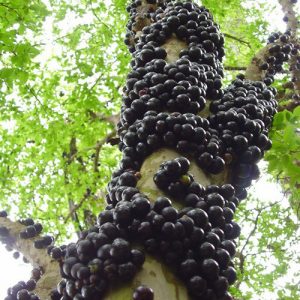
Jabuticaba fruit grows on the trunk and limbs of the tree.
In its native Brazil the Jabuticaba is by far the most popular fruit. The Dutch knew about it in 1658. Jabuticaba made it to California by 1904. It’s a common ornamental and there are many cultivars” Sabara, Paulista, Rajada, Branca, Ponhema, Rujada, Roxa, Sao Paulo, Coroa, Murta, and Mineira. Per 100 grams Plinia cauliflora fruit has 45.7 calories, 0.11 grams of protein, 0.08 grams of fiber, 0.01 grams of fat and 12.58 gams of carbohydrates. Vitamin A is absent but it has 22.7 mg of vitamin C which is about a third of your daily need. The B vitamins are B1 (thiamin) 0.02 mg, B2 (riboflavin) 0;02 mg, and B3 (niacin) 0.21 mg. Two minerals are reported: Calcium 6.3 mg and phosphorus 9.2 mg. It is also called Myrciaria cauliflora.
It’s a short tree planted in warm areas of North American and a common ornamental in Florida and the Gulf Coast. One is reported to sustain an 18F freeze and continued to thrive and fruit. Jabuticaba means “like turtle fat” referring to the fruit pulp, or, it means “tortoise place.” Take your pick. Myrciaria is from the Greek myrike (μυρίκη) which was the Greek name for the “tamarisk” a tree that is aromatic. In English it means Myrtle. Cauliflora means cauliflower-like. Plinia is Dead Latin for filled, full, rich, whole, perfect, well-equipped. You might remember from history Pliny the Elder and Younger.

You get the USB, not the key.
My nine-DVD set of 135 videos has been phased out and replaced by 171-videos on a 128-GB USB, see right. The USB videos are the same videos I have on You Tube. Some people like to have their own copy especially if social order falters. The USB videos have to be copied to your computer to play. If you want to order the USB go to the DVD/USB order button on the top right of this page or click here. That will take you to an order form. Or you can make a $99 donation, which tells me it is for the USB (include a snail-mail address.) I’d like to thank all of you who ordered the DVD set over the years which required me to burn over 5,000 DVDs individually. I had to stop making them as few programs now will read the ISO files to copy them. Burning a set also took about three hours.

Green Deane Forum
Want to identify a plant? Perhaps you’re looking for a foraging reference? You might have a UFO, an Unidentified Flowering Object, you want identified. On the Green Deane Forum we — including Green Deane and others from around the world — chat about foraging all year. And it’s not just about warm-weather plants or just North American flora. Many nations share common weeds so there’s a lot to talk about. There’s also more than weeds. The reference section has information for foraging around the world. There are also articles on food preservation, and forgotten skills from making bows to fermenting food. Recent topics include: Stale Bread and Cod Liver Oil, Killing Bugs with Tobacco Plugs, Eating weeds: Is it safe? Have they mutated? Not the Eastern Red Bug but the Pink Tabebuia, African Tulip Tree, Asparagus densiflorus, Green Deane’s Book… You can join the forum by clicking on the button on the upper right hand side of this page.
This is my weekly newsletter #542. If you want to subscribe to this free newsletter you can find the sign-up form in the menu at the top of the page. My website, EatTheWeeds.com, which is data secure, has over 1500 plants on it in some 428 articles. I wrote every one myself, no cut and paste.
To donate to the Green Deane Newsletter click here.

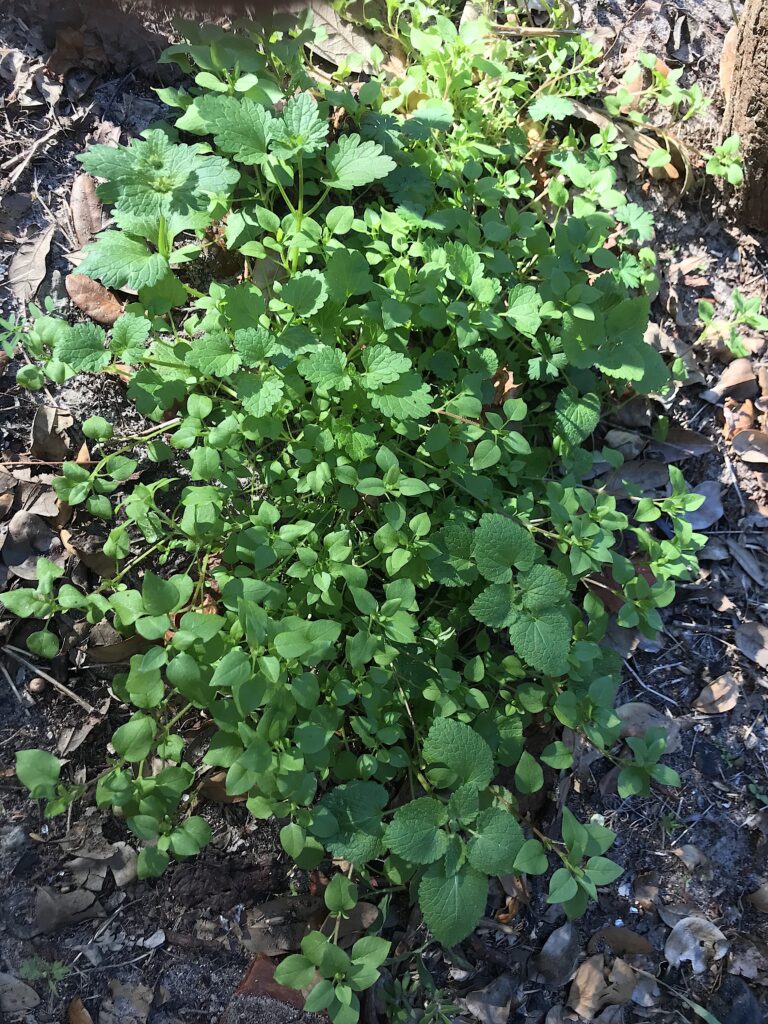
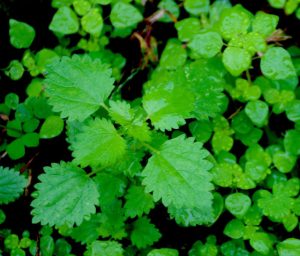
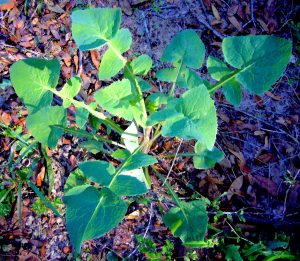


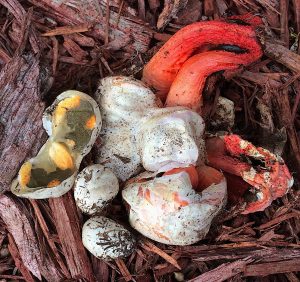

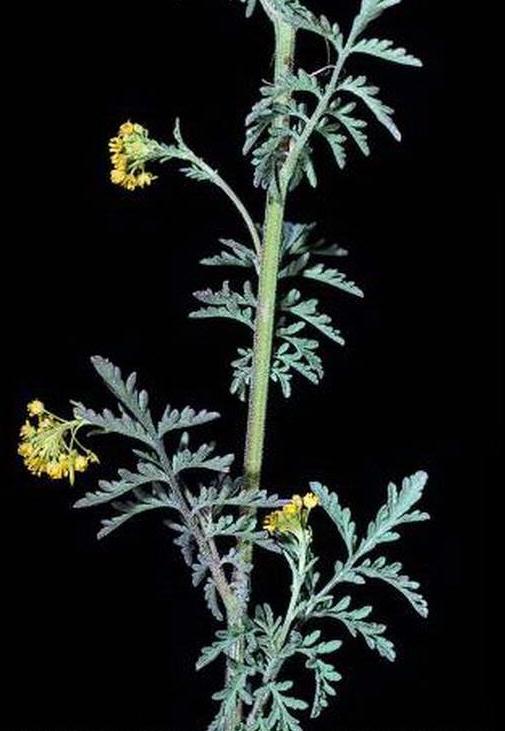
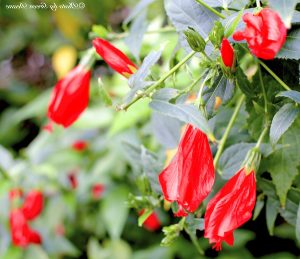

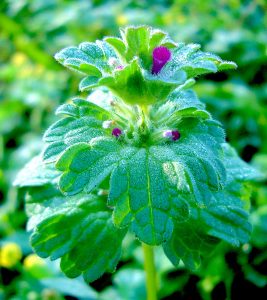
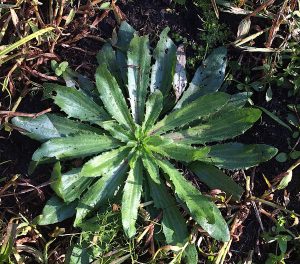
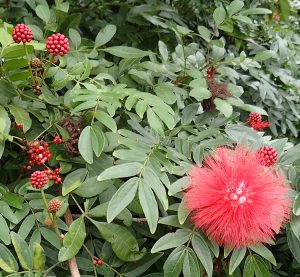

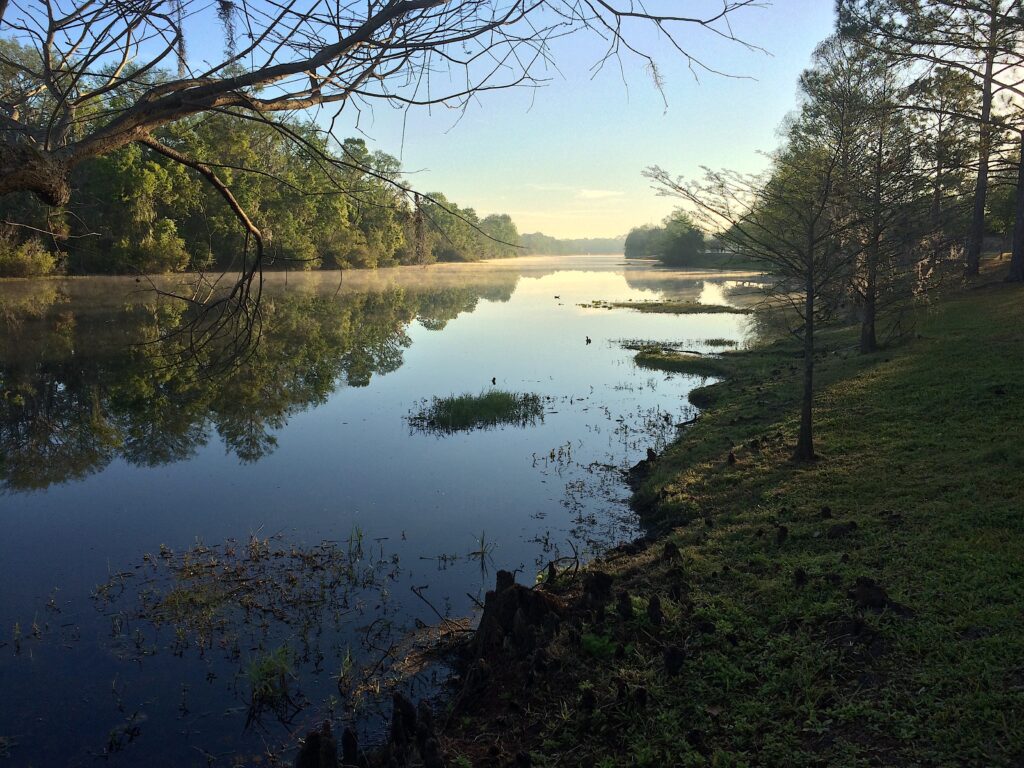

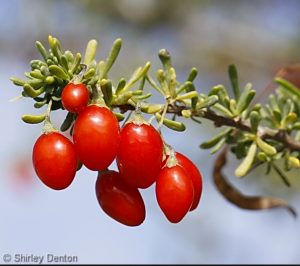
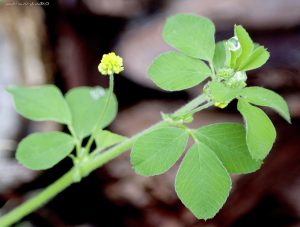
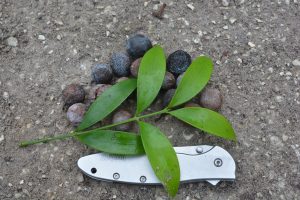
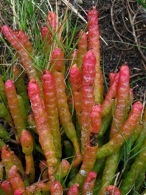

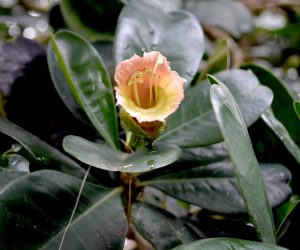
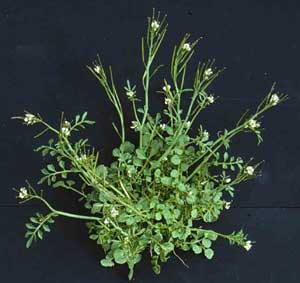
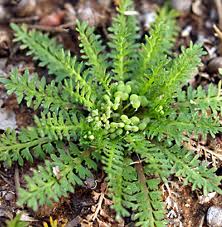
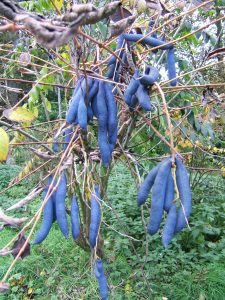
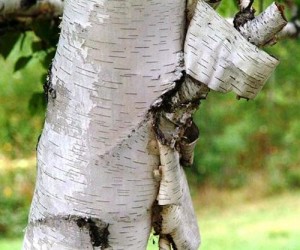
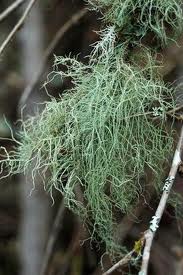 -oides again means “resembling” or ‘looks like.” Tillandsia usneoides (Spanish Moss) means looks like the lichen usnea. ranunculoides means looks like ranunculus (butter cups.)
-oides again means “resembling” or ‘looks like.” Tillandsia usneoides (Spanish Moss) means looks like the lichen usnea. ranunculoides means looks like ranunculus (butter cups.)